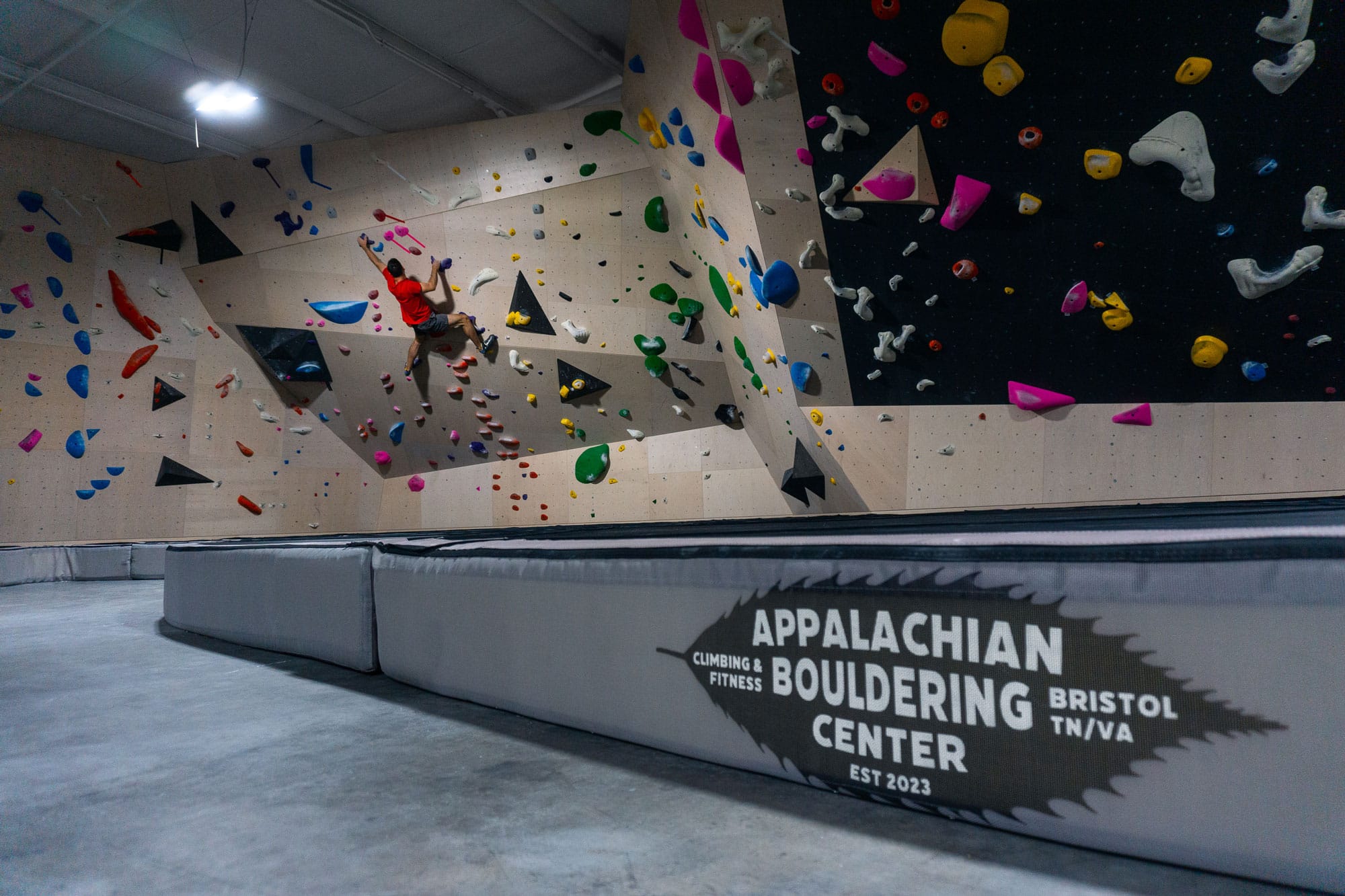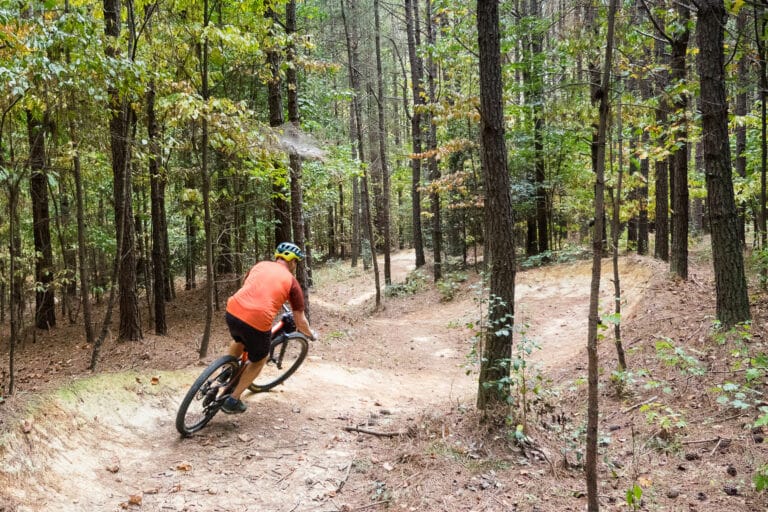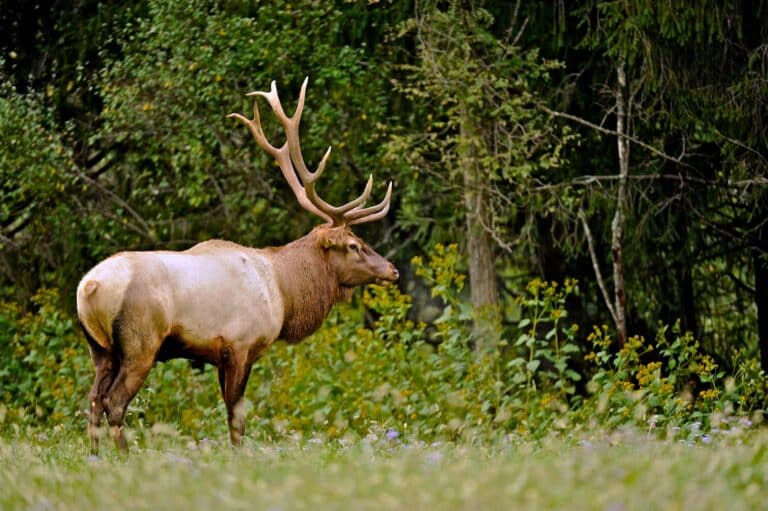After developing routes in central Appalachia for a decade, four buddies opened Bristol’s first climbing gym to draw more climbers out to their lines.
When four longtime friends—Aaron Parlier, Brad Mathisen, Jesse Cheers, and Matt Kyle—head into the backcountry of central Appalachia to develop climbs, they look for certain sandstone. Mathisen says it’s like porcelain, with a sheen to it. The good sandstone is usually lined with white and pinkish-orange bands. This rock is hard, with unique little features made better by the cold. “The rock just feels sticky,” he says. “You’ll slap onto something, and it’s like Velcro.”
A lot of sandstone isn’t a safe bet for climbing, according to geologists. It often succumbs to breakage over time. But those Appalachian creamsicle shades may give away an exception—a stable sandstone that contains pure quartz cemented with silica and iron oxide. These contents help create physically hard and chemically stable rock that holds up well against weathering.
Developing this rock feels like a treasure hunt, Mathisen says. To reach it, the team bushwhacks past walls of puffy-petaled rhododendron and mountain laurel, poison ivy, and ground nests of yellow jackets. Then, they find lines, clean them, climb them, clear them for legal land access, and share them. “It’s fun to do the initial development and have your special moment with your friends that found the area,” Mathisen says. “You’re doing the work and putting up first ascents and climbing things that have never been climbed before. But the long-term reward is seeing other people out there, and they’re having that same experience.”
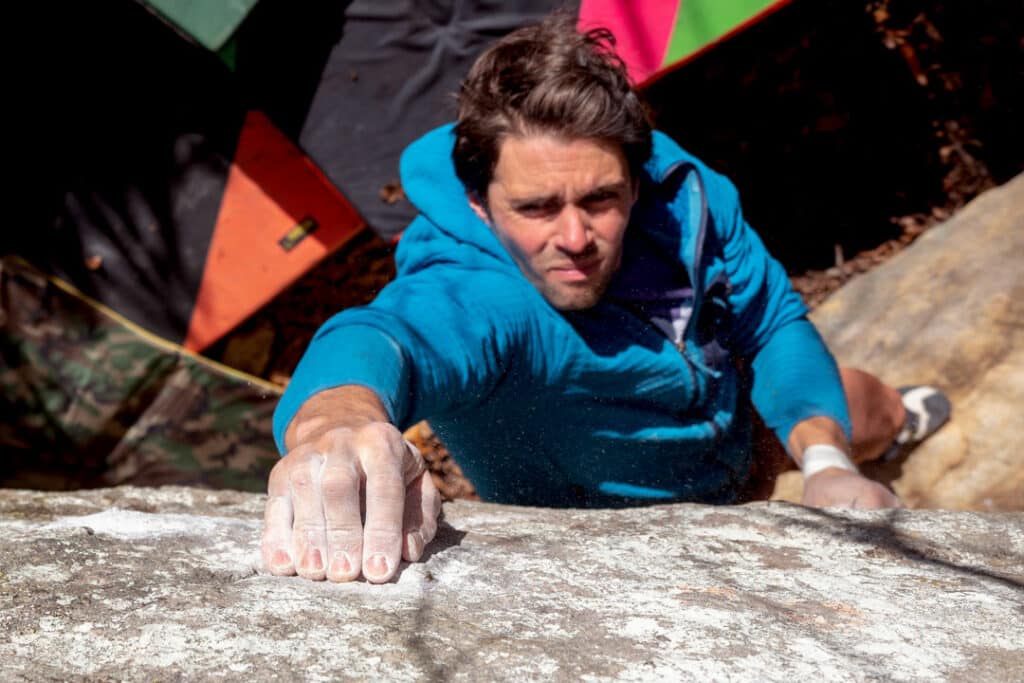
With no interest in keeping good sandstone a secret, last year Kyle, Cheers, Mathisen, and Parlier opened the Appalachian Bouldering Center in Bristol, Tenn. The gym owners’ top priority is to cultivate community in a warm and inviting space. The second is to get that community outside, to the places the four friends have explored for years, like Grayson Highlands State Park, the Guest River Gorge, and Breaks Interstate Park. “We have these great areas, but we haven’t had a hub for people,” Cheers says. “Now, we’re hoping this gym can be that hub. There’s all this great outdoor climbing. Get into it here. We’ll tell you about spots.”
Inside the Appalachian Bouldering Center, a handful of scattered rocking chairs face the gym’s boulders. The walls are mostly steep with a touch of slab, which matches the ratios of nearby boulders at Grayson Highlands State Park. Parlier, the first of the four to get into development, started climbing at the well-known Virginia park. He grew up less than half an hour away and returned to the area after serving in the Army abroad, using bouldering as a form of therapy. After sharing more than 400 of the climbs he developed at Grayson Highlands on Mountain Project, Parlier put 350 of them into a climbing guidebook for the area alongside publisher Dan Brayack.
Mathisen, Cheers, and Kyle credit Parlier for getting them into route development over the past decade. The four, who live scattered around Appalachia in Abingdon, Bristol, and Boone, now have hundreds of boulder problems and sport routes between them, with more in sight. Mathisen is focused on Breaks Interstate Park, for which he’s written a guidebook. With development of a new crag just getting started, he foresees the addition of 80 to 100 routes.
In 2014, Mathisen and Parlier founded the Central Appalachian Climbers Coalition to work with officials and landowners to secure access to newly developed climbing areas, which can cross over a “patchwork” of property types, Parlier says, like private and public land, state and national forest, and wilderness. “We saw where the area could go if climbing ever caught on,” Mathisen says. “We needed an organization to protect and promote access in the region.”
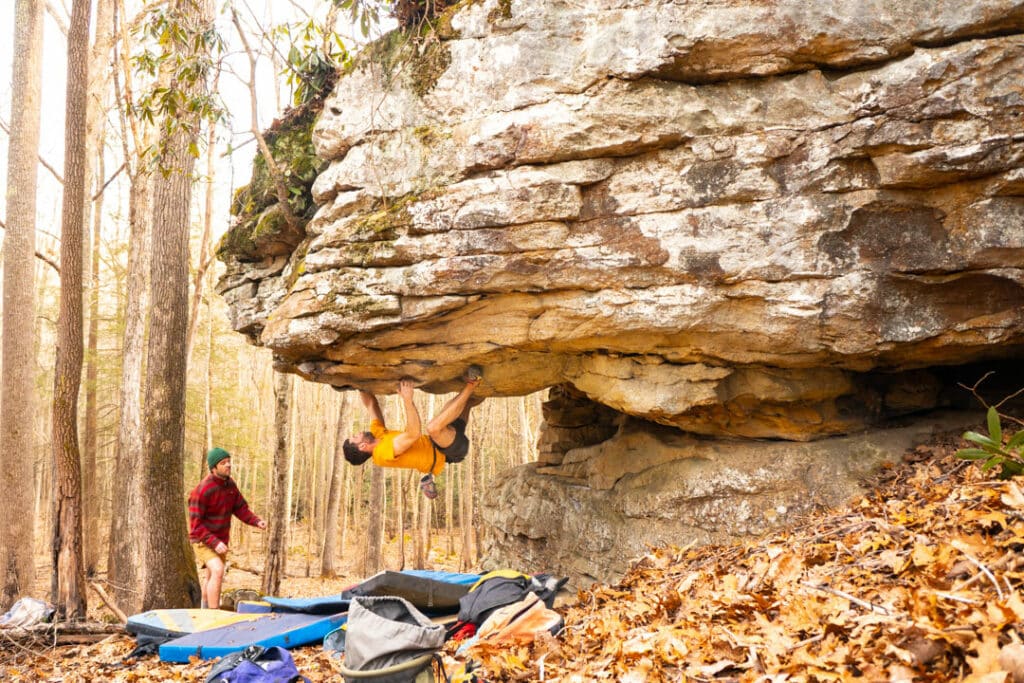
Protecting access means passing on knowledge of how quickly it can slip away, Parlier says, which may not be top of mind at all modern gyms. “Now, you’re getting into climbing in an indoor environment away from the elements, with predesigned routes that are color-coded or taped with little grade tags, and you can just belly flop onto these giant memory foam mattresses,” he says. “There’s no impact whatsoever. Then, you can pick up your phone, pull up Kaya, tap on a little icon, and be guided, Pokémon Go style, through the forest.”
What’s missing there is mentorship, Parlier says, which he hopes new climbers can find at the Appalachian Bouldering Center. Mathisen, Cheers, and Kyle aim to be a source of information by pointing people to local boulders and sport routes, offering introductory climbing classes that cover outdoor ethics, and co-hosting local climbing and stewardship events with the Central Appalachian Climbers Coalition. “You can foster a way more robust and way more excited community if you have people climbing indoors and outdoors, even if half of their time is spent inside,” Parlier says.
Kyle and Cheers have sensed excitement about the arrival of Bristol’s first climbing gym from locals since day one. Last year, climbers they knew and people they had never met showed up to help move building materials when the gym was still under construction. “That’s how people are, though, in Appalachia,” Kyle says. “I hope that’s how we are as a business.”
Mathisen hopes so, too. “I love the Appalachian culture that’s built up around family, pride of place, and a slower pace of lifestyle that is not focused on pure productivity, but is based on relationships,” he says. “We’re owners of the gym, but we’re very prominent in the daily operations, in the community of the gym, because those qualities of Appalachian culture, we want to be qualities of the climbing community as well. So that it’s not just about how hard you climb. Did you have a good time? Did you enjoy the people you were with? Did you make new friends? I think that’s what ultimately keeps most people in climbing. It’s obviously tons of fun, personally rewarding, and challenging. But it’s the friendships and the bonds you make.”
Cover photo: Appalachian Bouldering Center. All photos courtesy of Appalachian Bouldering Center owners.
